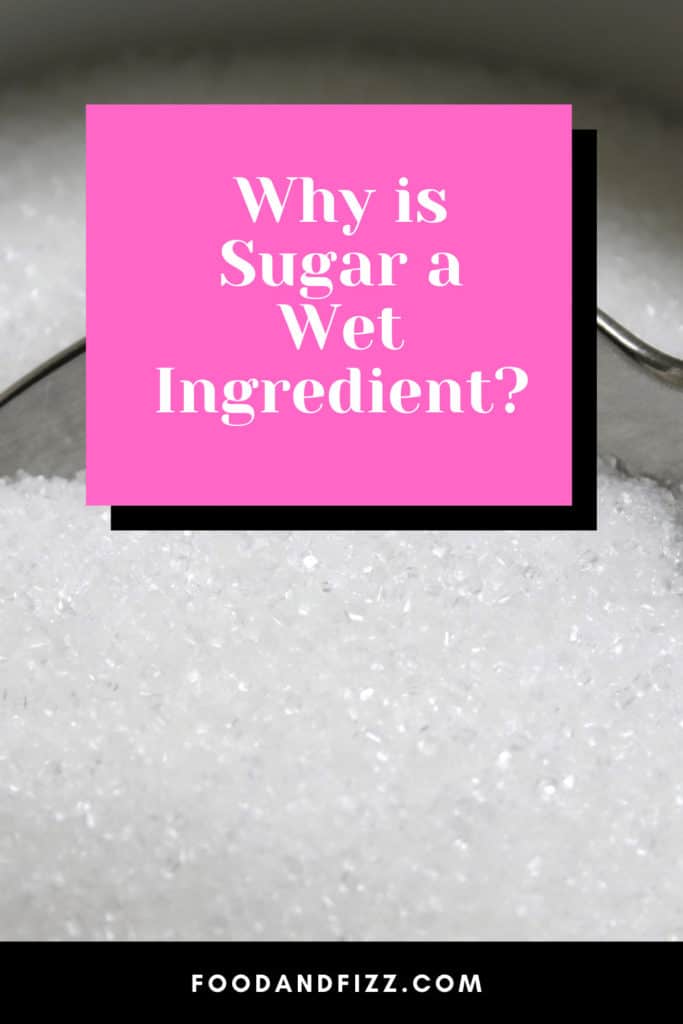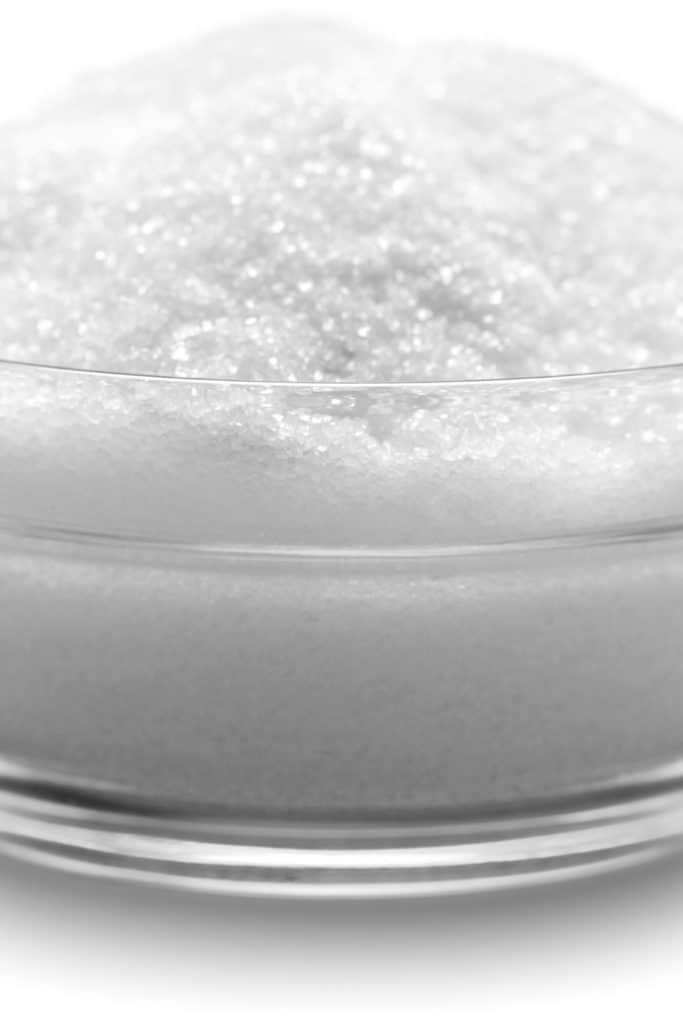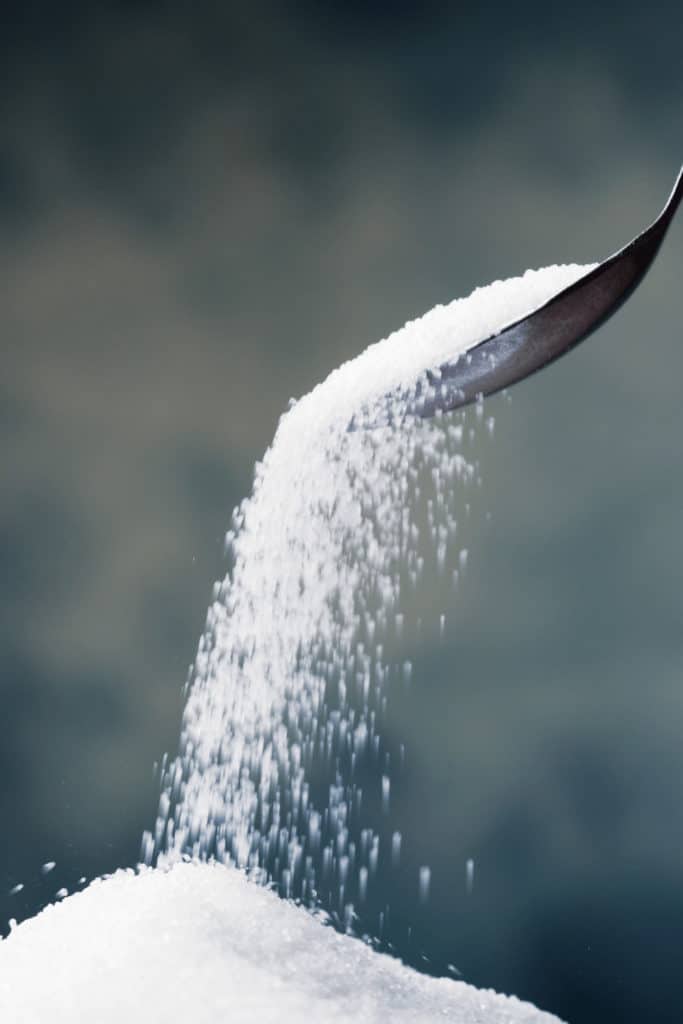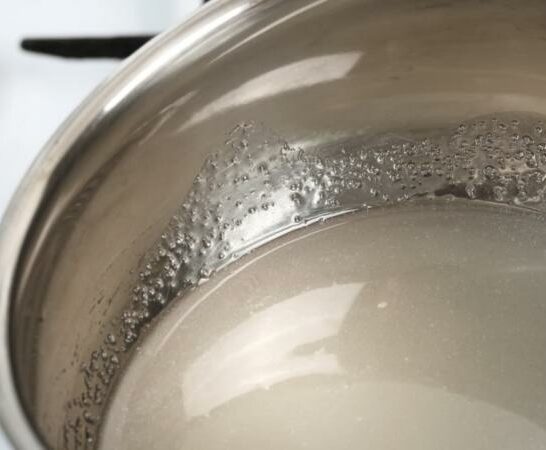Why is Sugar a Wet Ingredient?
This article is going to stand out from all others on the Internet by starting with a definition of ‘wet ingredient.’
When I first got involved in this topic, I couldn’t find a definition for ‘wet ingredient’ anywhere, and it drove me potty.
To avoid laboring you with the same mental distress, here it is:
A ‘wet ingredient’ is an ingredient in a recipe that is a liquid or paste. In other words, a wet ingredient is an ingredient that is wet. Duh.
You know, like milk, like apricot juice, broth, sauce… sugar?!
Why is sugar a wet ingredient?
Actually, sugar is not a wet ingredient. Sugar is often treated as a wet ingredient because many recipes demand that sugar must first be dissolved into a liquid then used as a syrup in the recipe.

Sugar is always a solid–until it is dissolved in a liquid
Cooks, bakers, even cocktail makers can look upon sugar as a wet ingredient in many circumstances, but by no means in all circumstances.
In fact, depending on the way cooks and bakers look at a recipe, it is even possible to argue that in different parts of the recipe, sugar is both dry and wet.
For example, when the recipe says, ‘Set aside 8 oz. of sugar,’ in this instance, the sugar is clearly a dry ingredient.
Later, when the recipe continues, ‘Mix the sugar into a thick syrup by dissolving into ½ a pint of hot water,’ the sugar becomes a wet ingredient.
In baking recipes for muffins and cakes, fat and liquid sugar are always separate because their chemistry in the baking process is markedly different and can lead to markedly different results.
Some baking experts are even able to tell if a recipe for a cake is going to succeed or fail based on its sugar-to-water ratio, among other things.

Glutenin, gliadin, gluten, cakes, muffins, and wet sugar
All any cook or baker needs to know about gluten
Different flours contain different amounts of protein, and therefore, each will have a different ability to make gluten.
Why is this important?
Flour–the kind that comes from wheat–is a great source of glutenin and gliadin, an excellent and important pair of proteins.
It turns out that when these two proteins mix with water, they combine to form exceptionally long strands of our old friend… gluten.
It is this gluten that gives structure to wheat-based flour and imbues that flour with strength, which is one reason why wheat is such a popular grain.
(By the way, this action of gluten on flour is so remarkable that it is claimed 6th-century Chinese noodle makers called gluten ‘mien chin,’ or ‘muscle of flour’, which is a really apt way of looking at it.)

Mastering gluten and dough
The properties of gluten let cooks and bakers do two things. Because of gluten, they can stretch dough, and they can shape it.
Gliadin gives dough its plasticity–its ability to hold a shape, while gluten gives dough its elasticity–its ability to stretch.
Depending on how a person is working a piece of dough, one of these aspects will be more active than the other.
For example, when kneading dough, the glutenin is the dominant factor, and the dough stretches and snaps back into place.
However, glutenin takes a back seat once the dough has rested for about 20 minutes, and gliadin becomes the dominant factor.
This lets the cook or baker push, pull, and tease the dough into a permanent shape.
Now, absolute mastery of gluten and dough is understanding that there is a need to strike a balance to achieve certain desired results.
Since gluten lends toughness to cooked foods, targeting the right amount of toughness for the intended food is necessary.
The amount of protein and water (and therefore, gluten) required for cookies and sweet biscuits, for example, is by no means the same as required for cakes.
This is precisely why some cooks use certain spirits for wetting ingredients instead of water.
(The liquor wets many ingredients okay while limiting the amount of water used, and thereby limiting the amount of gluten produced.)
Why wet sugar is important
Compared to cookies and bread, for instance, foods like muffins and cakes require less gluten.
Nevertheless, all these foods require some degree of moisture in order to get the ingredients to mix properly.
To complicate matters, too little moisture and the food will dry out completely during baking, leaving behind a dry and tasteless meal.
On the other hand, too much moisture will allow the production of a lot more gluten, resulting in a meal with a decidedly odd texture.
For example, too much gluten could result in a cake that, to all intents and purposes, is a bread, or a spongy, springy, weird, sweet ‘biscuit.’
One solution to all this is to find a method of ‘hiding’ water away from the proteins in flour so that gluten cannot form. It turns out that sugar is the perfect accomplice for this scheme.
This is because sugar and water, once introduced, fall in love and become inseparable BFFs.
With sugar bonded to water, neither glutenin nor gliadin gets the chance to form their own bonds to the ‘happily married’ water and so are unable to produce gluten.
This simple–and effective–strategy works like a charm.
Frequently Asked Questions About Why is Sugar a Wet Ingredient
Why do we have to add wet sugar to the mix a little at a time in many recipes
Mixing dry and liquid ingredients together all at once–and not just sugar–means that the amount of mixing that is necessary is greatly reduced, which in turn lessens the amount of gluten that will be present in the food at the time of cooking. By paying close attention to the final result, cooks and bakers will come to intimately understand the process and learn how to add, and for how long to mix, wet and dry ingredients.
Why add wet and dry ingredients more than once?
Baked foods that are dense and tough result from mixing batter and dough together. The best method is bringing wet and dry ingredients together is to combine them a first time in the batter, then do it all over again a second time with the dough. That way, there will be little need to mix them at all.
Afterword: Why is sugar a wet ingredient?
Sugar dissolved in water hinders the action of gluten-forming proteins. It’s a way (actually, the premier way) of adding liquid into mixes without getting tough, chewy foods.
Sugar is often regarded as a ‘wet ingredient’ because using sugar to control the toughness and chewiness of baked foods only works when it is in a solution.
It will never work when added as a dry ingredient.

